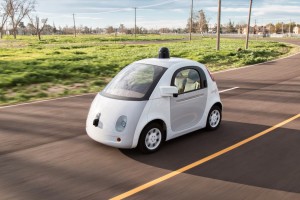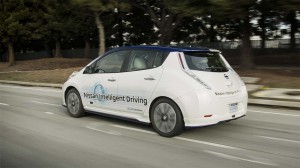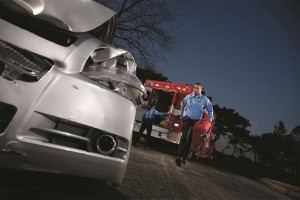An estimated 90% of all crashes are the result of driver error which, proponents believe, should mean markedly fewer deaths and injuries once autonomous vehicles begin rolling out on the nation’s highways.
That should be doubly good news for American motorists, according to a report by Moody’s Investors Service, which predicts a sharp decline in auto insurance rates. But that’s not necessarily good news for the insurance industry.
“Accident frequency will fall sharply over time, and will ultimately translate into significantly lower premiums and consequently lower profits for auto insurers,” the report forecasts.
By some estimates, the arrival of the autonomous vehicle era could drop the current U.S. highway death toll – which stood at just over 32,000 in 2014, to near zero in the coming decades. There are already signs that the fundamental technologies needed to make self-driving vehicles work can pay off.
Preliminary estimates by the National Highway Traffic Safety Administration indicate U.S. highway deaths actually rose about 8% in 2015, though that may largely be the result of a surge in post-recession traffic. At the same time, a recent report by the Insurance Institute for Highway Safety found that automatic emergency braking, or AEB, reduced the number of frontal crashes by about 40%.
A consortium of 20 automakers working with NHTSA this month announced plans to make AEB a standard feature on about 99% of American vehicles by 2022 – and some carmakers, including Toyota, hope to get there ahead of that target.
(For more on the voluntary AEB announcement, Click Here.)
(Toyota, Lexus to add Auto-Braking to all but three models by 2017. Click Here for more.)
Auto-braking is one of the key components needed to permit vehicles to drive autonomously, and the various sensors used by AEB will be shared with other self-driving technologies. A number of automakers, notably including Cadillac and Nissan, plan to steadily roll out more and more of these features over the next few years. Nissan has also set a target of having its first fully autonomous vehicle in production by 2020.
Who will actually be first on the road is far from certain, but the numbers are likely to be low through the middle of the next decade, according to another study by the Boston Consulting Group. It echoes the report by Moody’s in anticipating the real surge will come by 2030.
According to Moody’s, autonomous technology will become a common option by then, and will likely be a standard feature on all new models sold in the U.S. by 2035.
With more than 300 million vehicles on the road by then, however, it will take time to fully phase in the technology as older vehicles are slowly scrapped. Moody’s doesn’t see self-driving cars being in the majority until as late as 2045.
“Widespread adoption of self-driving cars is still decades off,” said Jasper Cooper, Moody’s Investors Service assistant vice president.
One reason for the long phase-in is likely to be regulatory hurdles. Only a handful of states, including Michigan, Nevada and California, have specifically addressed the issue of autonomous driving. The National Highway Traffic Safety Administration has begun wading into the debate, but key issues have yet to be decided. California, for example, has specifically ruled out the use of driverless vehicles like those ride-sharing service Uber eventually hopes will fill its fleet.
“The technology will be there before the legislation is there,” BMW Board Member Ian Robertson said during an interview with TheDetroitBureau.com last week.
(For more on BMW’s autonomous vehicle plans, Click Here.)
That position was echoed by Moody’s Cooper. A key challenge will be deciding who is not only at fault but who will pay when there is a crash involving a self-driving vehicle.
“Regulators, lawmakers and courts will have to determine how liabilities are shared among insurers, automobile manufacturers, and technology companies,” he said, adding this “raises questions of what an auto insurer’s role will be in a world with far fewer accidents.”
In the relative near-term, insurers may try to maintain existing rates as autonomous vehicles begin rolling out, something that could yield them significant increases in profits – though the cost of repairing or replacing autonomous hardware would likely be more expensive than fixing a conventional vehicle.
Eventually, however, rates would need to be adjusted to reflect declining repair and medical costs, as car insurance is, in most states, closely regulated. That eventually could threaten the profitable business model the insurance industry is based on, warned Moody’s.



